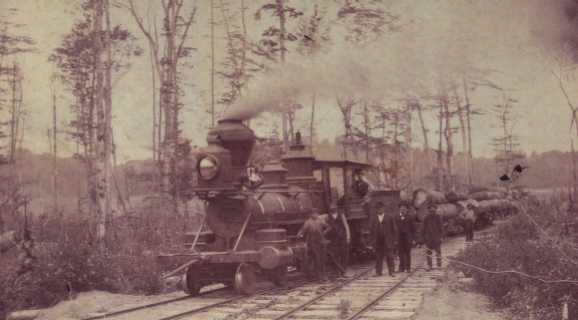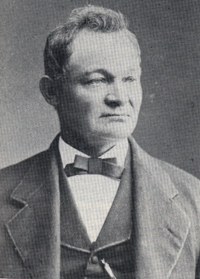Overview: Lumbering in the Arcadia Area
Next | Previous | Return to Start
|
For a thirty year period beginning around 1869 Michigan was the leading lumber producer in the United States. Lumbering in Michigan started in the southeastern part of the state and moved north and west in a continual search for new stands of timber. Along almost every navigable stream that could carry logs, lumber camps cut logs and sent them downstream to sawmills that turned logs into lumber and other wood products. As time passed, the methods used throughout the process improved. Human- and water-powered saws were replaced by commercial steam-powered saws. Sailing ships picked up lumber along the the Lake Michigan shoreline, until piers were built into Lake Michigan for the sawmills at Pierport, Arcadia, Burnham, and all along the shoreline. Lumbering that could only be done in the winter nears rivers and streams became a full-time operation with the introduction of big wheels and narrow gauge steam engines. Safe harbors like Arcadia’s and steam ships like the Arcadia and Sydney O. Neff transported wood products to Chicago, Milwaukee, and other cities along Lake Michigan's shore. In the 1850s Harrison Averill’s sawmill near Watervale was one of the first to provide lumber to settlers in that area and to ships anchored along Lake Michigan's shore. Around 1874 the Huntington Sawmill was built just south of present day Arcadia to provide lumber to settlers in the immediate area and ships. Henry Starke made his first purchase of timber land in the spring of 1866, and by 1883 he owned around 2,000 acres in northern Manistee county and a sawmill at the north end of Lake Arcadia. Imagine riding a carriage in the mid-1800s just south of what would become Arcadia and seeing the valley for the first time. The area had large forests of pine, the staple of Michigan’s growing lumber industry. Streams nearby might be used to transport logs. The small lake could be used to store logs next to a mill where they would wait their turn to be cut into lumber. The lake was separated from Lake Michigan only by a narrow sand bar, so a channel to Lake Michigan was within reach. A large sawmill and a safe harbor could help fill an insatiable demand for lumber in Chicago and with what seemed like an inexhaustible supply in Michigan.
|
|
 Starke Land & Lumber Company Railway
Starke Land & Lumber Company Railway
